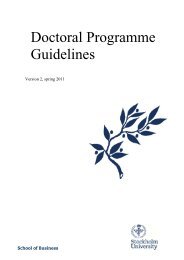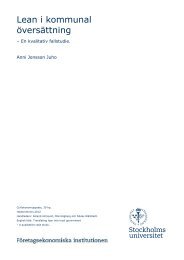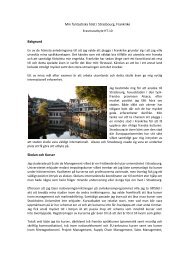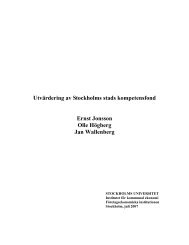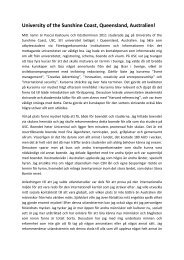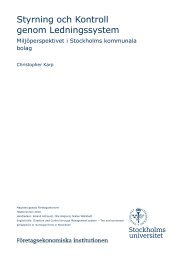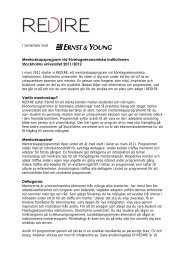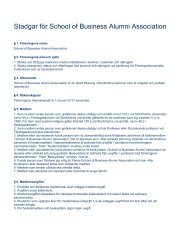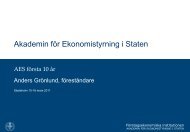Organizational Atmospheres: Foam, Affect and Architecture
Organizational Atmospheres: Foam, Affect and Architecture
Organizational Atmospheres: Foam, Affect and Architecture
Create successful ePaper yourself
Turn your PDF publications into a flip-book with our unique Google optimized e-Paper software.
<strong>Organizational</strong> <strong>Atmospheres</strong>:<br />
<strong>Foam</strong>, <strong>Affect</strong> <strong>and</strong> <strong>Architecture</strong><br />
Christian Borch<br />
Volume 17(2): 223–241<br />
ISSN 1350–5084<br />
Copyright © The Author(s), 2009.<br />
Reprints <strong>and</strong> permissions:<br />
http://www.sagepub.co.uk/journalsPermissions.nav<br />
Department of Management, Politics <strong>and</strong> Philosophy, Copenhagen Business<br />
School, Frederiksberg, Denmark<br />
Abstract. This article discusses the contribution of Peter Sloterdijk’s<br />
theory of spheres to organization theory. Specifically, I apply Sloterdijk’s<br />
sphereological notion of foam to obtain a new perspective on organizations.<br />
It is argued that a foam-theoretical approach provides a simultaneous<br />
focus on organizational dynamics of affective imitation, on the spatial <strong>and</strong><br />
architectural dimensions of organizations <strong>and</strong>, finally, on the politics of<br />
organizational atmospheres. The article opens with a brief introduction<br />
to Sloterdijk’s sphere theory <strong>and</strong> then proceeds by applying his notion<br />
of foam to organizations. This includes a comparison between the foamtheoretical<br />
angle <strong>and</strong> existing perspectives in organization theory. Next I<br />
discuss Sloterdijk’s analyses of the spatiality of foam. In the final part of<br />
the article, I argue for taking seriously the politics <strong>and</strong> management of<br />
organizational atmospheres. Key words. affect; architecture; atmosphere;<br />
foam; Gabriel Tarde; imitation; organizations; Peter Sloterdijk<br />
In the past decade a growing interest has emerged in the spatial <strong>and</strong><br />
architectural dimensions of organizational life. Seminal work in this field<br />
has pointed to intimate links between generative building <strong>and</strong> organizing<br />
(Kornberger <strong>and</strong> Clegg, 2004); to how the design of workspaces is used to<br />
attract valuable workers (Duffy, 1997); as well as to the general interrelations<br />
between material space <strong>and</strong> organization (Dale <strong>and</strong> Burrell, 2008).<br />
These examples represent only a tiny fraction of the important work that<br />
has recently been conducted on the spatial <strong>and</strong> architectural aspects of<br />
DOI: 10.1177/1350508409337168 http://org.sagepub.com<br />
Downloaded from<br />
org.sagepub.com at Stockholms Universitet on March 30, 2011





